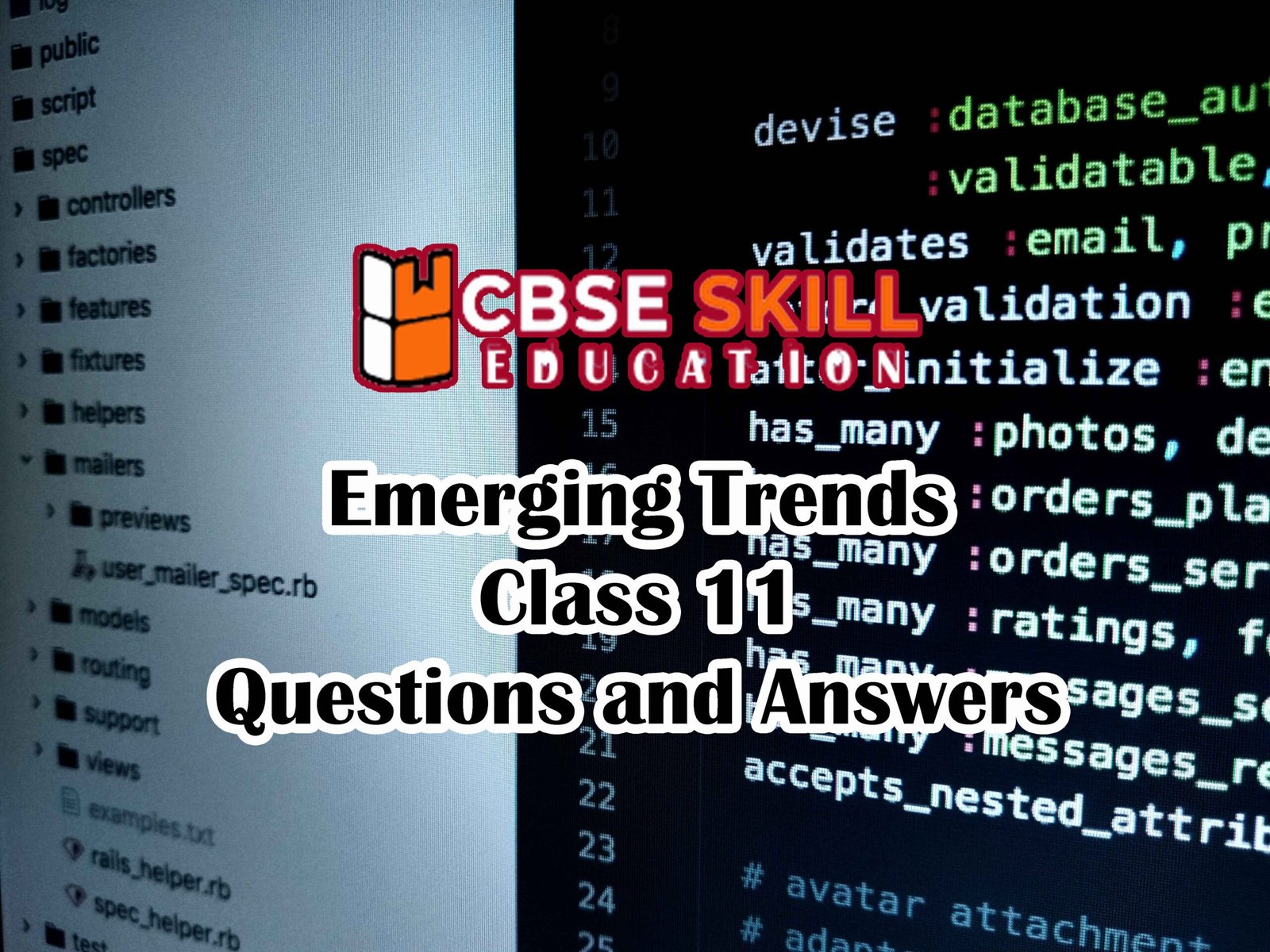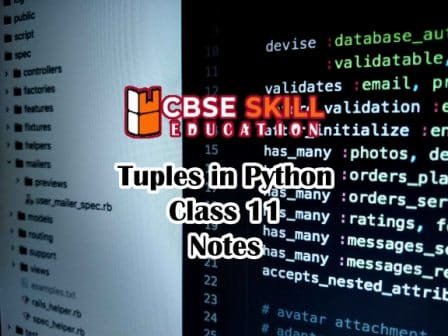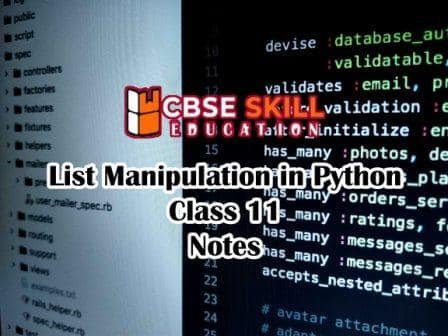Teachers and Examiners (CBSESkillEduction) collaborated to create the Encoding Schemes and Number System Class 11 NCERT Solutions. All the important Information are taken from the NCERT Textbook Computer Science (083) class 11.
Encoding Schemes and Number System Class 11 NCERT Solutions
1. Write base values of binary, octal and hexadecimal number system.
Answer –
Binary – 2
Octal – 8
Hexadecimal – 16
2. Give full form of ASCII and ISCII.
Answer –
ASCII – American Standard Code for Information Interchange
ISCII – Indian Script Code for Information Interchange
3. Try the following conversions:
Answer –
i. (514)8 = (332)10
ii. (220)8 = (10010000)2
iii. (76F)16 = (1903)10
iv. (4D9)16 = (1241)10
v. (11001010)2 = (202)10
vi. (1010111)2 = (87)10
4. Do the following conversions from decimal number to other number systems.
Answer –
i. (54)10 = (110110)2
ii. (120)10 = (1111000)2
iii. (76)10 = (114)8
iv. (889)10 = (1571)8
v. (789)10 = (315)16
vi. (108)10 = (6C)16
5. Express the following octal numbers into their equivalent decimal numbers.
Answer –
i. 145 = (101)10
ii. 6760 = (2568)10
iii. 455 = (301)10
iv. 10.75 = (8.95312)10
6. Express the following decimal numbers into hexadecimal numbers.
Answer –
i. 548 = (224)16
ii. 4052 = (FD4)16
iii. 58 = (3A)16
iv. 100.25 = (64.4)16
7. Express the following hexadecimal numbers into equivalent decimal numbers.
Answer –
i. 4A2 = (1186)10
ii. 9E1A = (40474)10
iii. 6BD = (1725)10
iv. 6C.34 = (108.20312)10
8. Convert the following binary numbers into octal and hexadecimal numbers.
Answer –
i. 1110001000 = Octal – (1610)8 Hexadecimal – (388)16
ii. 110110101 = Octal – (665)8 Hexadecimal – (1B5)16
iii. 1010100 = Octal – (124)8 Hexadecimal – (54)16
iv. 1010.1001 = Octal – (12.44)8 Hexadecimal – (A.9)16
9. Write binary equivalent of the following octal numbers.
Answer –
i. 2306 = (10011000110)2
ii. 5610 = (101110001000)2
iii. 742 = (111100010)2
iv. 65.203 = (110101.010000011)2
10. Write binary representation of the following hexadecimal numbers.
Answer –
i. 4026 = (100000000100110)2
ii. BCA1 = (1011110010100001)2
iii. 98E = (100110001110)2
iv. 132.45 = (100110010.01000101)2
11. How does computer understand the following text?
(hint: 7 bit ASCII code).
Answer –
i. HOTS
| H | O | T | S | |
| ASCII Code | 72 | 79 | 84 | 83 |
| Binary Code | 1001000 | 1001111 | 1010100 | 1010011 |
ii. Main
| M | A | I | N | |
| ASCII Code | 77 | 97 | 105 | 110 |
| Binary Code | 1001101 | 1100001 | 1101001 | 1101110 |
iii. CaSe
| C | A | S | E | |
| ASCII Code | 67 | 97 | 83 | 101 |
| Binary Code | 1000011 | 1100001 | 1010011 | 1100101 |
12. The hexadecimal number system uses 16 literals (0–9, A–F). Write down its base value.
Answer – 16
13. Let X be a number system having B symbols only. Write down the base value of this number system.
Answer – If X is a number system with B symbols, then B will be the basic value of that system.
14. Write the equivalent hexadecimal and binary values for each character of the phrase given below.
‘‘ हम सब एक”
Answer –
| ह | म | स | ब | ए | क | |
| Hexadecimal | 0939 | 092E | 0938 | 092C | 090F | 0915 |
| Binary Code | 100100111001 | 100100101110 | 100100111000 | 100100101100 | 100100001111 | 100100010101 |
15. What is the advantage of preparing a digital content in Indian language using UNICODE font?
Answer – The biggest benefit of adopting Unicode for creating digital content in Indian is that we don’t need to have that font installed on our machine in order to render the language characters.
16. Explore and list the steps required to type in an Indian language using UNICODE.
Answer –
Step 1: Write an character in Indian Language
Step 2: Every character having UNICODE, Machine will read the code automatically
Step 3: After reading the code by machine, Machine will convert the code into Binary Language
17. Encode the word ‘COMPUTER’ using ASCII and convert the encode value into binary values.
Answer –
| C | O | M | P | U | T | E | R | |
| ASCII Code | 067 | 079 | 077 | 080 | 085 | 084 | 069 | 082 |
| Binary Code | 01000011 | 01001111 | 01001101 | 01010000 | 01010101 | 01010100 | 01000101 | 01010010 |
Computer Science Class 11 Notes
- Unit 1 : Basic Computer Organisation
- Unit 1 : Encoding Schemes and Number System
- Unit 2 : Introduction to problem solving
- Unit 2 : Getting Started with Python
- Unit 2 : Conditional statement and Iterative statements in Python
- Unit 2 : Function in Python
- Unit 2 : String in Python
- Unit 2 : Lists in Python
- Unit 2 : Tuples in Python
- Unit 2 : Dictionary in Python
- Unit 3 : Society, Law and Ethics
Computer Science Class 11 MCQ
- Unit 1 : Basic Computer Organisation
- Unit 1 : Encoding Schemes and Number System
- Unit 2 : Introduction to problem solving
- Unit 2 : Getting Started with Python
- Unit 2 : Conditional statement and Iterative statements in Python
- Unit 2 : Function in Python
- Unit 2 : String in Python
- Unit 2 : Lists in Python
- Unit 2 : Tuples in Python
- Unit 2 : Dictionary in Python
- Unit 3 : Society, Law and Ethics
Computer Science Class 11 NCERT Solutions
- Unit 1 : Basic Computer Organisation
- Unit 1 : Encoding Schemes and Number System
- Unit 2 : Introduction to problem solving
- Unit 2 : Getting Started with Python
- Unit 2 : Conditional statement and Iterative statements in Python
- Unit 2 : Function in Python
- Unit 2 : String in Python
- Unit 2 : Lists in Python
- Unit 2 : Tuples and Dictionary in Python
- Unit 3 : Society, Law and Ethics








